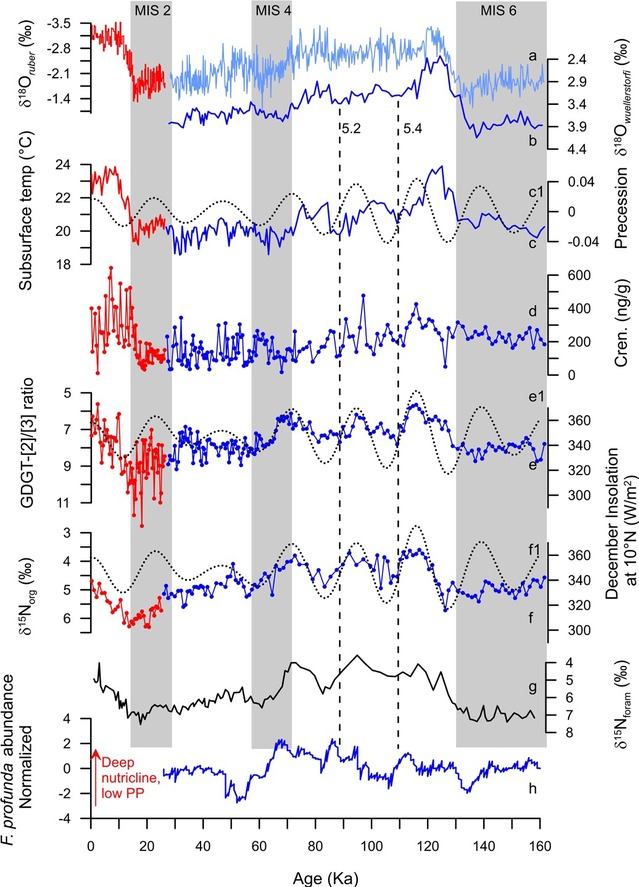Liang Dong1,2, Zhiyang Li3, Guodong Jia1*
1 State Key Laboratory of Marine Geology, Tongji University, Shanghai 200092
2 State Key Laboratory of Microbial Metabolism, School of Life Sciences and Biotechnology, Shanghai Jiao Tong University, Shanghai 200240
3 Guangdong AIB Polytechnic College, Guangzhou 5510507
ABSTRACT
Thaumarchaeota, as an ammonia oxidizing archaea (AOA), is crucial for modern marine nitrogen cycling; however, little is known about its history during the Quaternary climate change. Here, isoprenoidal glycerol dialkyl glycerol tetraethers (GDGTs), biomarkers of Thaumarchaeota, were used to trace the role of AOA in the South China Sea (SCS) for the past 160 kyr. The GDGT-[2]/[3] ratio was firstly argued as an indicator of contribution of shallow Thaumarchaeota cluster that is more active in ammonia oxidization (AO) than the deep cluster, and then, was used to reconstruct AO in the past. The inferred AO exhibited intensification in the interglacials, and moreover, showed strong precessional cycles with enhancements at the precessional maxima when boreal winter insolation was the highest. The AOA record varied in line with isotope record of organic nitrogen (δ15Norg) that is modulated by the strength of diazotroph N2 fixation (NF), suggesting a close coupling of increased AO with enhanced NF during periods of weak east Asian winter monsoon (EAWM) and hence increase of upper water stratification. AO intensification, a step of a series of dissolved oxygen consuming processes, is hereby hypothesized to encourage NF when the EAWM weakens. This result might be a reference for the future NF trend in the current situation of enhanced ocean deoxygenation due to global warming.

Full article: https://www.sciencedirect.com/science/article/pii/S0012821X18307386


